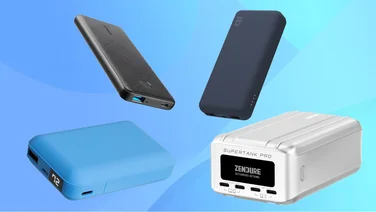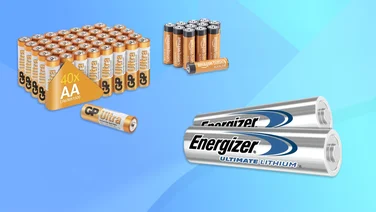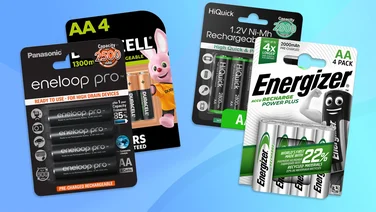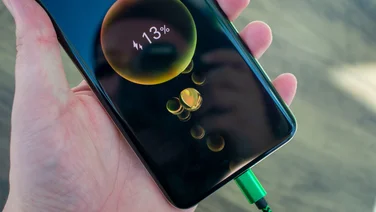To help us provide you with free impartial advice, we may earn a commission if you buy through links on our site. Learn more

Hydrogen fuel cells are supposed to be the future of clean energy, replacing fossil fuels and even electricity as the ultimate way to power our cars, as well as our other household gadgets. It’s a long road until that becomes a reality, but companies like Intelligent Energy are already taking small steps; it is on the verge of launching Upp, a hydrogen-powered portable battery charger that can keep your phone juiced up for weeks at a time, in the UK, and we’ve been putting it through its paces to bring you a full review.
THE UNIT
Upp is actually comprised of two parts; a charger unit and a fuel cell cartridge capable of 25-amp hours of power. That equates to 25,000mAh, over twice that of the largest traditional battery backups. The two connect together magnetically, creating a seal that automatically shuts off the flow of hydrogen should you separate them. A USB port on the top of the charger unit will let you connect any handheld device, so you could use it to charge an eReader, MP3 player, tablet or portable speaker as well as your smartphone, as long as the 1A peak current output at 5V is sufficient for recharging. When both parts are connected, the single power button starts the PEM (Proton Exchange Membrane) electrochemical reaction and generates electricity to recharge your devices.
The charger unit has its own internal battery, which is used to power the fans needed to pull in air and exhaust water vapour from the electrochemical reaction. The dust cap has a Micro USB port built into it in case the charger ever runs low on juice, so you can top it up without having to use any of your hydrogen reserves.
With a full fuel cell, should be able to last an entire week away from the mains, charging your phone up to five times before it runs out of gas. Throughout our testing, we lasted our week of work at the busy IFA trade show using one hydrogen cell. At the end of the week, we still had a small portion of hydrogen remaining to get us home. Switching over to our second fuel cartridge, we managed to recharge four phones from 20% battery to full, with the hydrogen finally running out on a fifth handset.
THE APP
The free Upp app, available on the iOS and Google Play app stores, shows you how much hydrogen you have remaining in your cell, and precisely how long it will last when charging your smartphone. This sometimes took a while to update, though, so we weren’t always confident it was displaying the actual amount of hydrogen we had remaining.
You don’t need to install the app to start charging, but it does give you the option to enable fast charging for when you don’t have time to stay connected. You can also enable EcoMode, which uses less power for when your handset is in flight mode.
When you do eventually run out of gas, you’ll need to find somewhere to pick up hydrogen refills. There’s no way to refill each cell yourself, either at home or at a petrol station equipped with hydrogen facilities – which are practically non-existent in the UK anyway. Instead, you’ll have to take the old cell and trade it for a new, full one at a fuel exchange, paying around £10 per charge. There are thousands of fuel exchange partners listed as “coming soon” on the company website, but currently there’s only one – the Intelligent Energy service centre in Loughborough. Hardly convenient for the rest of the population.
THE PROBLEMS
As you might expect, a hydrogen-powered battery back is more complex than a regular portable charger, so although Intelligent Energy has managed to shrink the Upp unit to a manageable size, it’s still significantly larger than most other battery packs. It’s also much heavier, too, weighing close to 620g. The cartridges themselves have big warning labels, marking them as “combustible” and containing material that is “flammable and under pressure” – although you’re legally allowed to take it on to a plane in hand luggage, it could still raise questions at airport security.
There are other downsides to hydrogen as well. When powered on, the unit occasionally makes a mechanical clicking sound and creates a noticeable smell when expelling water vapour created by the electrochemical reaction, which can be a little off-putting. It has to be used in a well-ventilated area, meaning you can’t leave it in a bag or pocket for on-the-go charging.
Most importantly, you have to pay for refills, making it considerably more expensive than a traditional battery backup. Admittedly you’ll need a huge capacity charger to go an entire week without reaching for the mains, but currently it will work out cheaper in the long term by sticking with traditional power rather than switching to hydrogen.
THE WRAP UP
At £150, Upp isn’t cheap – and that’s before you take into account you’ll be paying extra every time you the need to refill it. Hydrogen is undoubtedly going to be more widely used in the future, but right now there’s no major benefit over a traditional battery-powered portable charger. Unless you plan on spending a significant amount of time away from any kind of mains socket, we think you’d be better served by a high-capacity charger rather than plump for hydrogen just yet.
| SPECIFICATIONS | |
|---|---|
| Number of USB ports | 1 |
| Max output | 1A |
| Output by port | 1A at 5V |
| Battery capacity | 25,000mAh |
| Warranty | one year RTB |
| Details | www.beupp.com |
| Part code | Upp |






